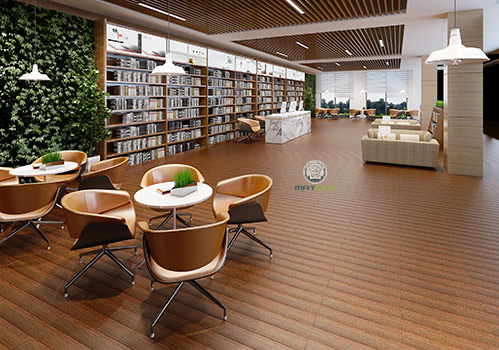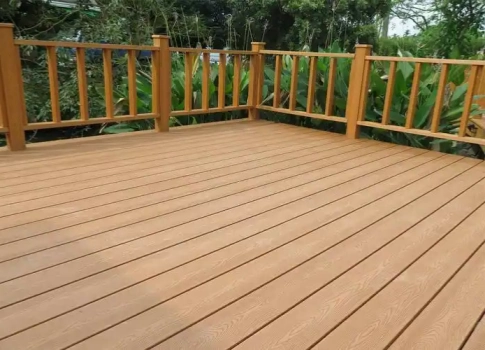What Is the Difference Between WPC and Multiwood?
Wood Plastic Composites (WPC) and Multiwood are two popular choices when it comes to selecting materials for construction, furniture and upholstery. Both engineered materials are known for their versatility and are used in a wide variety of applications. However, they differ significantly in terms of composition, properties and ideal use scenarios.
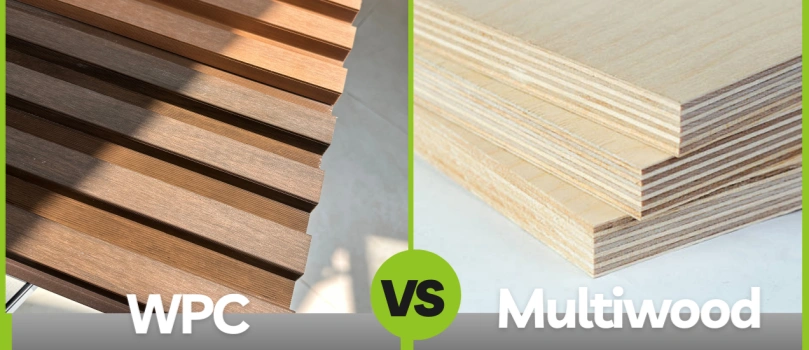
Table of Contents
What’s the WPC?
WPC are composites made by mixing wood fibers with plastics (usually PVC or PE). The plastic component gives the WPC durability and resistance to environmental factors, while the wood component adds to the natural appearance of the WPC. WPC is usually produced through an extrusion process, resulting in a strong, durable, weather-resistant profile.
What’s the Multiwood?
Multiwood is an engineered product made from a mixture of wood fibers, wood chips and resin binders. This mixture is pressed at high temperatures and pressures to produce a smooth, uniform sheet. The resulting material has a consistent structure and is ideal for applications that require a delicate finish.
Performance Comparison: WPC vs. Multiwood
Water Resistance and Weather Durability:
WPC: Due to its plastic content, WPC excels in water and weather resistance. It can withstand sun, rain and humidity without warping, cracking or swelling, making it ideal for outdoor applications such as decking, fencing and cladding.
Multiwood: Multiwood has good moisture resistance and is therefore suitable for indoor environments such as kitchens and bathrooms where moisture may be present. However, prolonged exposure to outdoor environments such as UV rays and extreme weather can lead to degradation, making it less suitable for outdoor use.
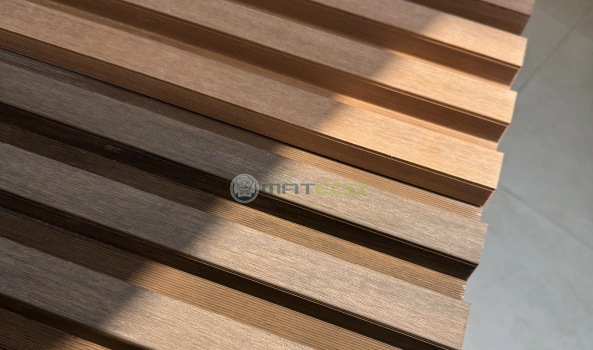
WPC Boards
Strength and Hardness:
WPC: The plastic component of WPC increases its strength and toughness. It is more durable and less prone to warping, making it suitable for high-traffic areas and outdoor environments where sturdiness is important.
Multiwood: While Multiwood provides adequate strength and rigidity for furniture and upholstery, it is not usually as hard and strong as solid wood or certain high-density materials. It is ideal for lightweight decorative applications.
Weight
WPC: Due to its higher plastic content and density, WPC is heavier than Miwood. The added weight contributes to its strength, but can make it more challenging to handle during installation. However, you can choose our WPC products, ours is PVC-based, which is lighter than PE-based on the market and easy to install and handle.
Multiwood: Multiwood's relatively low weight makes it easy to handle, transport and install. Its lightweight nature makes it particularly suitable for applications where ease of installation and maneuverability are important.
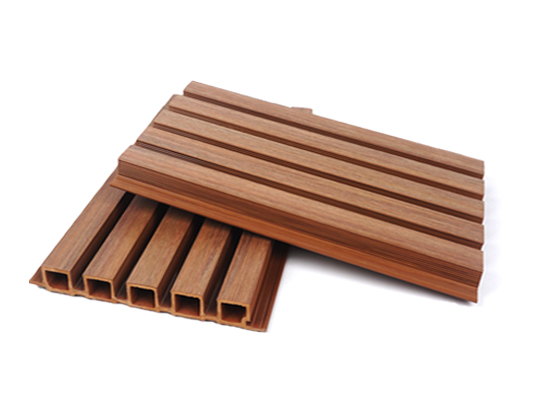
WPC Fluted Panels Q19020C
This WPC Fluted Panel features a sleek, fluted design, ideal for enhancing building facades with durability and aesthetic appeal.
View More
Workability and Aesthetic Flexibility: WPC vs. Multiwood
WPC: WPC can be cut and drilled, but is less suitable for complex and delicate processing due to its high plastic content. It does not require additional surface treatments, as its appearance is determined during the manufacturing process. WPC usually retains its original color and texture, which limits customization options but ensures long-lasting durability and minimal maintenance.
Multiwood: Multiwood has excellent workability. It can be cut, drilled, carved and shaped like solid wood, making it a versatile choice for customized designs, and Multiwood's homogeneous structure ensures neat edges and a smooth surface. In addition, Multiwood can be easily painted, laminated or veneered, allowing for a wide range of aesthetic possibilities.
Appearance and Decorative Potential: WPC vs. Multiwood
Multiwood: Multiwood is available in a variety of decorative finishes, including painted, laminated and veneered. This flexibility allows it to mimic the look of different types of wood, making it a popular choice for interior applications where aesthetics are paramount.
WPC: WPC has a natural wood-like texture, but its decorative options are more limited. It typically retains the color and texture from the manufacturing process and, while durable, may not offer the same level of aesthetic customization as Multiwood.
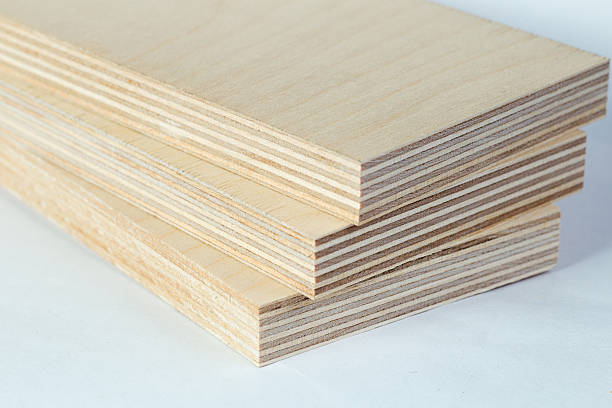
Multiwood Boards
Fire Resistance: WPC vs. Multiwood
Wood Plastic: Wood plastic generally has better fire resistance due to its plastic content, which slows down the burning process. However, it is not 100% fire resistant and should be used with caution in environments with high fire safety requirements.
Multiwood: Although Multiwood has some fire resistance, its wood composition means it can still burn at high temperatures. It is less fire resistant than materials with a higher percentage of non-combustible components.
WPC vs Multiwood Price
WPC: WPC tends to be more expensive than Multiwood, especially higher-end variants that offer superior performance. However, the long-term benefits, including durability and low maintenance, often justify the initial investment, particularly for outdoor applications.
Multiwood: Multiwood is generally more affordable, particularly when compared to solid wood or premium engineered wood products. It offers a cost-effective solution for projects that require a high-quality finish without the need for extreme durability.
Application Scenarios: Choosing Between WPC and Multiwood
WPC: WPC is the material of choice for outdoor applications including decking, fencing, pergolas and exterior cladding. Its superior durability and resistance to wind and sun make it suitable for environments that require long life and minimal maintenance. WPC can also be used in interior applications where durability is important, such as high-traffic commercial spaces.
Multiwood: Multiwood is primarily used for interior furniture, cabinetry, wall panels and decorative elements. It is ideally suited for modern interiors that require lightweight materials and a high gloss finish. However, Multiwood is not suitable for spaces exposed to harsh environmental conditions.
Conclusion
Multiwood and WPC each have their own advantages and are suitable for different applications. Multiwood is preferred for projects where aesthetics, lightweight construction and indoor use are important. In contrast, WPC is favored for its durability, weatherability and suitability for outdoor environments.
If you are looking for a WPC manufacturer, MATECO will be your best choice.
Website: https://www.matecowpc.com
WhatsApp: +86-13380085620
Email: info@matecowpc.com




